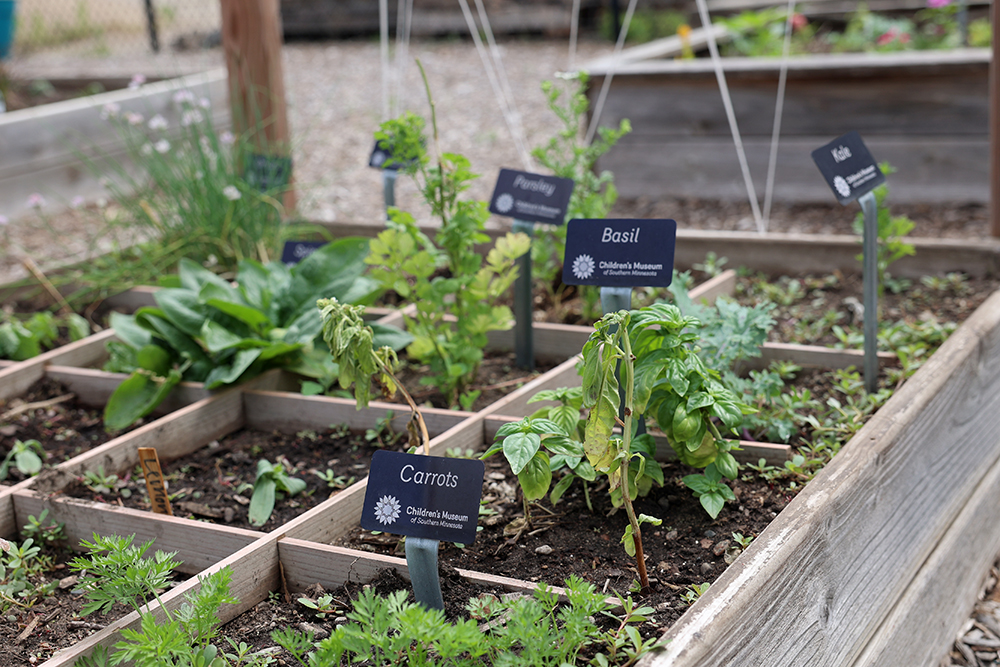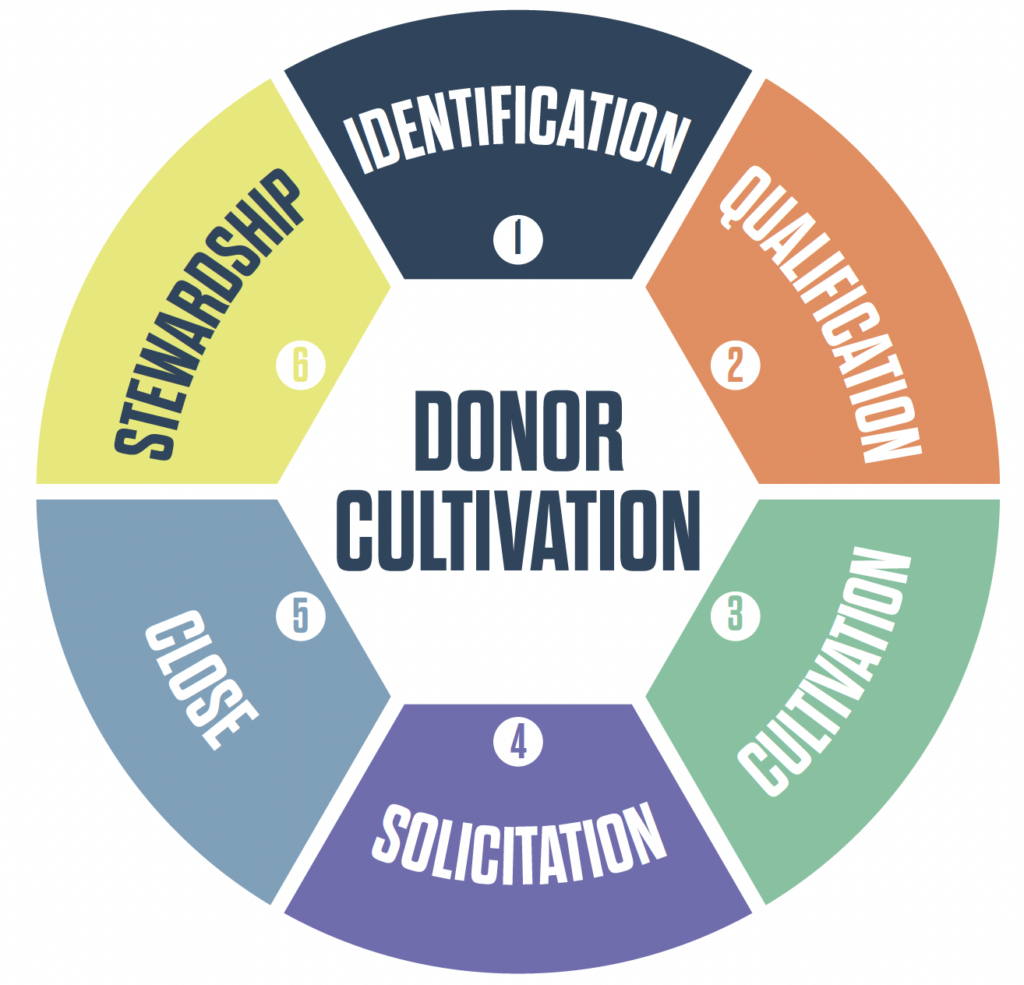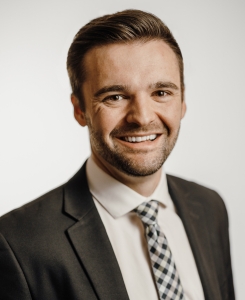Donor Cultivation & Stewardship: Key Steps in the Donor Cycle

The Children’s Museum of Southern Minnesota is expanding its outdoor nature play adventure opportunities for children and families through philanthropy. The museum is a compelling example of how intentionally following the steps of a donor cycle – especially adding cultivation and stewardship strategies to your solicitation process – can reap larger gifts and repeat donors.
Speaking of nature, you can think of a donor cycle as analogous to the water cycle of our planet, where rainwater feeds land, streams, and oceans, and the sun continues the process via evaporation. Just as the water cycle ensures the planet’s sustainability, following all the steps within the philanthropic gift cycle—donor identification, qualification, cultivation, solicitation, closure, and stewardship—can ensure the health of your nonprofit ecosystem.
By following CFA’s Guide to the Major Gifts Cycle, nonprofits can shepherd donors through the stages of philanthropy to build sustainable, long-term relationships. While the major gifts cycle contains distinct steps, the stages of cultivation and stewardship encompass ongoing activities that are integral to retaining a donor network with recurring and increased gifts. Employing cultivation and stewardship strategies can allow your organization to execute a more predictable and sustainable fundraising plan.
Donor Cultivation Strategies
Cultivation is the process of relationship building with a donor or prospect leading up to an ask. Cultivation includes personal visits, calls, emails, and events to engage the prospect and help match their interests with the needs of your organization. In addition to the executive leadership and development staff, board members play a pivotal role in the cultivation process by helping to champion your mission.
There are many ways to engage donor prospects through cultivation. A board member, executive director, or development officer can, for example, invite and accompany a prospect to an upcoming event and introduce them to the organization’s key constituents; organize a coffee or lunch with a prospect to share targeted updates on the organization’s programming and progress on strategic planning milestones; and/or send periodic formal communications, such as newsletters or annual reports, to prospects accompanied by a handwritten note for a personal touch. The cultivation stage can be lengthy and there is no need to rush it. There is a need, however, to track your moves. Consistently communicating the current status of each prospect as you progress through the gift cycle provides structure and consistency within your fundraising team.
Recommended Reading: How to Activate Your Strategic Plan for Fundraising Success
Stewardship Strategies
Stewardship refers to how an organization thanks donors and communicates how their generosity made an impact on the people and community an organization serves. While a prompt acknowledgment letter (mailed or electronic) is essential for tax reporting purposes, an organization can also engage with donors on a more personal level through handwritten notes, phone calls, donor appreciation events, and one-on-one meetings. Thoughtful gestures such as these are appreciated, especially with major gifts.
Donors are attracted to visionary organizations and are personally rewarded when they can see the demonstrated impact of their contributions. Ask community members or other stakeholders who have been directly impacted by your organization to share their gratitude through a direct phone call or personal note to the donor. If your organization has completed a campaign to build or renovate facilities, invite donors to an insider tour. If you have created a donor wall or naming opportunity for their gift, invite donors to an unveiling. Personalized attention will show the measure of your gratitude, and staying in touch will keep a donor informed of their continued impact. Remember, your next gift is a well-stewarded one.
Donor Cultivation & Stewardship Case Study
The Children’s Museum of Southern Minnesota (CMSM) is a one-of-a-kind museum, and its creative approach draws visitors from all over the Midwest. CMSM engaged CFA to conduct a Development Assessment as they sought a more sustainable platform for raising money. One of CFA’s recommendations was that board members become more invested in the relationship-building necessary to garner larger and repeat donations. Specifically, we suggested segmenting appeals into two seasons, adding a dynamic major gifts strategy, and hosting donor appreciation events. With CFA’s guidance, CMSM set forth a new leadership giving group, the Ignite Society, named after the driving force of CMSM’s mission “to ignite the curiosity of every child.”
CEO Lou Dickmeyer joined CMSM in 2019 and shepherded the organization through a pandemic closure and reopening. She said, “There’s so much support and passion for the Museum, it’s an easy ask, but we had not been sophisticated about telling our story. Our new Ignite Society has led us down a path where we more deeply engage our donors and increase conversation of what their dollars can do.”
As part of cultivation and stewardship efforts, CMSM offered a special donor event for Ignite Society members, a newsletter with behind-the-scenes details on exhibits and programs, and an in-person preview of the museum’s new exhibits. The Ignite Society grew to over 140 people within its first year.
“Working with CFA has deepened my understanding of how important it is to cultivate relationships and keep donors informed of what we’re doing,” Dickmeyer added. “We now have a clear line of sight to what success can be and how to get there. They helped us ready ourselves for a bold and strategic move to the next level.”
It is exceedingly difficult to secure multiple gifts from the same person or organization without the personal touches involved in cultivation and stewardship. If you are eager to learn more about how CFA can help your organization succeed through cultivation and stewardship, please reach out.
Jake Muszynski, Head of Consulting & Principal, Midwest
Jake is a highly experienced fundraising and consulting professional with over 15 years of combined experience in the industry. He began his successful career in major gifts at higher education institutions and has since provided counsel to over 30 clients at CFA, where he currently serves as Principal.
In this role, Jake leads major projects across the United States, including campaign readiness and feasibility studies, campaign planning and counsel, and development assessments. He takes a holistic approach to fundraising, considering organizational health from all perspectives and applying a mix of soft skills and data-driven decision-making to each unique situation.
A native of Perham, Minnesota, Jake holds a bachelor’s degree in communication from Concordia College. He and his wife have two children and share a love of folk and jazz music.


